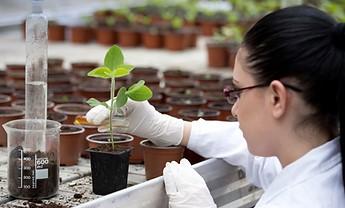
“Plant breeding, application of genetic principles to produce plants that are more useful to humans”. Gregor Mendel outlined the principles of heredity using pea plants and thus provided the necessary framework for scientific plant breeding. The plant breeder usually has in mind an ideal plant that combines a maximum number of desirable characteristics. These characteristics may include resistance to diseases and insects; tolerance to heat, soil salinity, or frost; appropriate size, shape, and time to maturity; and many other general and specific traits that contribute to improved adaptation to the environment, ease in growing and handling, greater yield, and better quality.
Plant breeding is an important tool in promoting global food security, and many staple crops have been bred to better withstand extreme weather conditions associated with global warming, such as drought or heat waves. Although traditional, heirloom plants generally are not as disease-resistant or productive as many modern hybrids, many have been selected for their superior flavours, and their colours and shapes are aesthetically pleasing. The distribution of new varieties developed by commercial plant-breeding companies is often through seed associations.
At Poddar International College, recognized for its academic excellence and practical exposure, students gain in-depth knowledge of plant breeding through research and experiential learning. By integrating scientific principles with real-world applications, the institution empowers future agricultural scientists to drive innovation and sustainability in global food production.
Importance of plant breeding in agriculture
- The main aim of plant breeding is to produce high-yielding plants. This production of high-yielding plants means the production of plants that are tolerant to extreme climatic conditions like a flood, drought, etc. The plant is produced in a way that it is resistant to harmful bacteria and viruses.
- Plant breeding is also done for another important reason and that is to increase water use efficiency.
- The high-yielding plant is produced so that it increases the nutrients (phosphorus, nitrogen) used efficiently.
- The hybrid plant has to survive in the weed competition in the market.
- The hybrid plant has to be tolerant to mechanical weed controls.
- The hybrid has to be tolerant to early maturity; this is done to avoid particular stresses on the plant.

